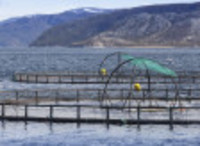We know there are only three northern white rhinos left on Earth.
We know that thousands of elephants are savagely murdered each year for their ivory.
We know pandas are endangered as they are frequently the "mascot" of environmental groups.
We know that polar bears are at risk for extinction in the near future because of global warming.
We know that certain tigers are near extinction.
When we hear the plight of these land animals we noticeably become sad, upset, angered, and we campaign to save them. We set up camps, and park systems, and conservation areas to protect these beautiful animals; or we try to find scientific methods to keep them alive.
Yet, when it comes to the oceans and Pelagic areas, many of us, and some "conservation groups" turn a blind eye, by not putting the resources into notifying the public of the sustainability problems betraying the oceans.
Yes, there are a number of "sustainability seafood" charts, but in reality the idea of sustainable fishing and fisheries is mostly a farce.
Between the 1950s and 1980s the annual seafood catch increased (in tonnage), and peaked in the late 80s to early 90s.
Since then, the level of seafood catch has been on the decline.
There just aren't the same number or size of fish in the ocean as there were back then.
And back then was not that long ago; a blink in the evolutionary clock.
The book, The End of the Line, discusses how in the 1950s, a single blue-fin tuna could be weigh as much as 1200-1300 pounds, while nowadays, the largest blue-fin tuna may be only weigh 400-500 pounds; not even large enough or old enough to reproduce.
Our desire for blue-fin tuna is killing multiple generations of future fish.
And to the proponents of fish-farming; it is neither environmentally friendly, nor sustainable.
As fish-farming increases to meet consumer demand for some of our favorite fish (salmon, tuna, cod), smaller wild fish are being caught at unsustainable rates to feed the farmed fish. In fact, it can take as much as 4-5 pounds of small-wild fish to create 1 pound of farmed fish.
Moreover, the ecological footprint of farmed fish may harm wild species by increasing water pollution, spreading disease, or out-competing them for resources and affecting their fecundity.
While many environmental groups know there is a problem of overfishing and overconsumption, and while some governmental and non-governmental organizations talk amongst themselves of the overfishing quandary, it is a poorly advertised and poorly discussed problem in the public media circles.
No entity of real importance or with policy-making capacity demonstrates (to the consumers) a worry, or a fear of the overfishing problem. It's a laissez-faire attitude.
But, The End of the Line and I argue, If the same methods used for fishing the oceans existed for land animals, there would be significant public outcry. If we all knew, just how destructive our fishing methods are, and could see it, perhaps we would advocate for change.
Just imagine, if 100 chickens were "accidentally" killed for every one we eat, this practice would be seen as unacceptable, unsustainable, and an abuse and misuse of resources.
Similarly, if a foot-ball field length of net were placed between two bulldozers driven (trawling) across the landscape clear cutting trees and wheat fields, trapping and dismembering birds, foxes, lions, bears, dogs, horses, or any other animal or plant you could think of, this not only would be unacceptable, but would probably lead to major changes in dietary habits, methodology, and conservation status.
We know there are fewer than 3% of blue-fin tuna left in the oceans; yet, the desire to eat their flesh is on the rise, particularly in Japan and in Japanese restaurants in other Western countries.
We know that in the Pacific Northwest, wild salmon populations have fallen precipitously, in part because of dams; yet, we are moving at a glacial pace to do anything to fix the problem.
Adding insult to injury, the USDA government nutrition guidelines continue to recommend consuming at least two portions of fish per week.
Two portions of fish per week for 320 million Americans is nearly 50 million tons of fish per year, or nearly 100 billion pounds of fish; and, that is just for direct consumption. This does not even include the number of fish caught for other uses, including pet food, vitamins, drugs, and other industrial uses (plant fertilizer!)
Although the Food and Agriculture Organization (FAO) of the United Nations reports over-fishing as a major problem, the message is not getting to us, the consumer.
What we need is stronger advocacy for change, from government officials, from those who have power to make change, and we need to offer proper guidance. We need to follow the example of the Netherlands which just this year recommended reducing fish consumption from two times per week down to only one time per week.
Our oceanic and Pelagic systems need to garner the same attention as our land-based systems, because not only does the world get a large amount of food from the oceans, but, the oceans are our life support.
Our oceans provide oxygen, food, and water to drink in the form of rain or snow. Our oceans temper our climate, keeping the Earth a livable place; but if we continue to damage them and kill all the life in them, we may inevitably kill ourselves.
Without our oceans we would look like Mars, or the moon, and so far, we have not found life on either.
We are killing our oceans. This is a fact. There needs to be outcry, there needs to be shock and awe, there needs to be worry.
Unfortunately, there are too many political factors and groups involved that tamp down education and advertisement about the state of our oceans and fisheries. These special interests don't want us to know about the problem, they will fish, until the last fish is gone. And this is a serious, serious problem.
We need to stop thinking of our oceans as an endless bank from which we can take.
We need to think of the ocean as a living body, one that can recuperate if we leave it alone and reduce our impact. But, to do that, we need to move away from the "All You Can Eat Seafood Buffet" and sushi models of eating which feature unsustainable fish and unsustainable fishing methods.
We need to fight for our oceans. There is a problem, we need to fix it, and we need to do it sooner rather than later.
So, What is the Fix?
1. It begins by reducing our consumption of seafood.
2. It also includes advocating and discussing with our Congress-men and Senators to support more stringent fishing regulations, especially regarding the methods used and the amount that is caught.
3. It also includes finding other healthy sources of a essential nutrients like omega-3's, which we can get from algae and plant sources since that is how fish create their omega-3's, by eating algae.
Finally, if you DO feel the need to consume fish; do so rarely (< 1x/month), and use this sustainable guide; as it is the best I've seen to date discussing these important conservation issues.
Lastly, be aware that eating fish may also come with health dangers, as I previously outlined in this article: Plastic: It's What's For Dinner.
For Interview requests or to contact Dana: recipe.for.survival@gmail.com
Twitter: recipe4survival
Facebook: https://www.facebook.com/RecipeForSurvival/
blog: recipeforsurvival.wordpress.com

